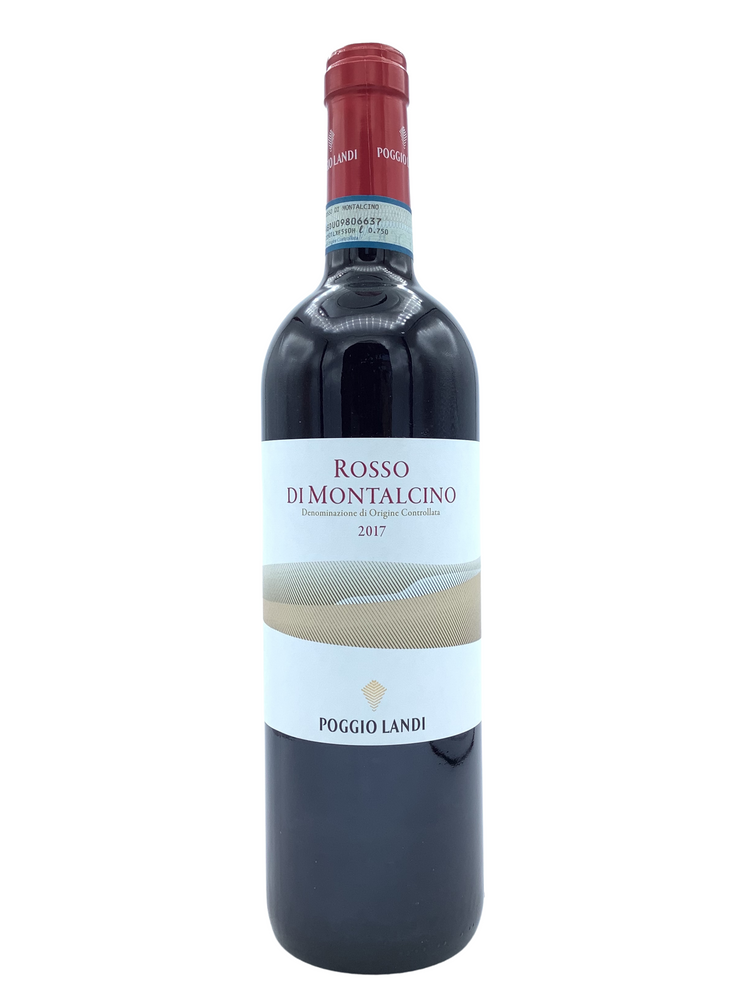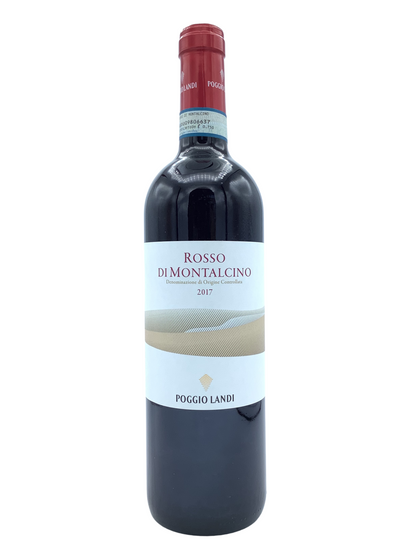Poggio Landi Rosso di Montalcino
- Regular price
- $26.99
- Regular price
-
$11.99 - Sale price
- $26.99
- Unit price
- per
Type Sangiovese
Read About the WineGet to Know This Product
Yep, I got Brunello on the brain. Spring is here and along with it comes the joyous return of so many green vegetables – ramps, fiddlehead ferns, fava beans, asparagus, artichokes. You name a green veggie, and spring’s got it. And then there’s the protein side of the plate – suckling lamb roasted with sage and rosemary, olive oil-poached halibut, lightly broiled orange and fennel-cured salmon.
And what to pair with all this bounty? Brunello, of course.
Brunello’s dark cherry fruit intermixed with the perfect dryness of long aging in oak barrels gives it a hint of bergamot, roses and chocolate. Its integrated, muscular tannins let you know you're drinking something serious and elegant, yet gutsy and powerful. And don't get me started on the finish: long and lingering, cleansing the palate and making you want to take another bite (and sip). Yes, for spring's gorgeous bounty, Brunello is just perfect.
But lo! When I went down into my cellar there was no Brunello to be found. Some clever Mazzamuriello must have snuck in and appropriated all the Brunello. What was I to do? – Reach instead for Rosso di Montalcino, but only the finest, of course – Il Poggione.
Brunello is, technically speaking, several different things. First, Brunello is a grape -- “the little dark one.” Brunello is also a region, surrounding the hillsides of the town of Montalcino, as its full name Brunello di Montalcino, suggests. And finally,Brunello is a set of laws, in Italy known as DOCG (Denominazione di Origine Controllata e Garantita). And this is where things get interesting.
Like all DOCGs, Brunello’s mandates grape type, vineyard area, oak treatment and aging. But Brunello’s goes further – stipulating the maximum vineyard yield (4.7 tons / acre) as well as the maximum production of Brunello from a winery as a percentage of total output (68%).
So get this: Even if everything else matches – grapes, location, aging, vineyard – as a Brunello producer, you can only label 68% of what you make as “Brunello”.
Imagine you have 100 barrels of wine. The government will only let you label 68 of them as Brunello, even though the other 32 are exactly the same wine.
So what do you do with the 32 barrels?
You “declassify” them. Meaning you change the legal name, and that’s all. But there’s a catch.
As a wine, Brunello is well endowed with forceful tannins and strong acidity that initially overrides its fruit. Aging a Brunello for decades brings these components into a glorious harmony. Some of us may have cellars that are provisioned with gloriously harmonious ’81 Brunello but most of us need something to drink tonight. So when Landi is selecting her Rosso, she thinks of us, and chooses Brunello with more fruit, less acid and less tannin – and that is how she chooses the 32 barrels to “declassify” and label Sangiovese Rosso.
The upside to this catch is that you can drink it now (and at great savings compared to a bottle of Brunello).
Poggio Landi’s Rosso is a pure, bright and elegantly delicious drinking experience. Vivid red and black cherry fruits emerge from the glass mixing with violets, cedar and hints of cypress. On the palate its bright acidity gives true meaning to the phrase “pizza wine”, being utterly drinkable and fresh. The finish reveals its Brunello ancestry with a lingering finish of mocha and chocolate. Beautiful to drink now, it will age gracefully for ten more years – it is, in essence, a Brunello
Yes, I’ve got Brunello on the brain. But it’s far better to have Rosso for my wallet. Salute!


